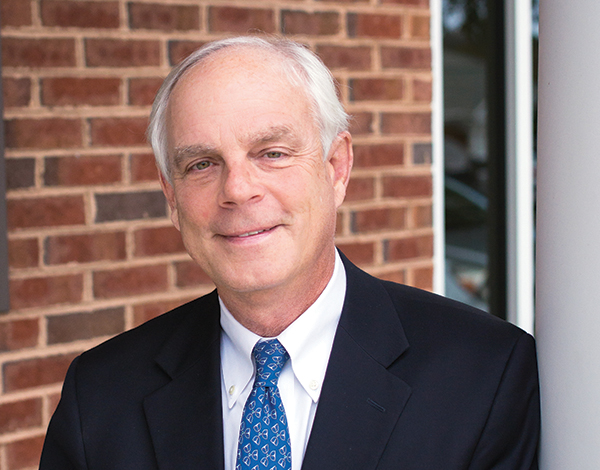The History of Plastic Surgery
By William Byron Barber II, M.D.

As I sit down to answer plastic surgery questions for the May issue of Kernersville Magazine, we are in the throes of a worsening Covid-19 pandemic nationwide. To date, we have not suffered nearly as badly as our fellow citizens in New York, Washington State, or other regional hotspots. I am praying that somehow we are spared the potentially catastrophic events that have befallen some of our fellow citizens. By the time you read this, things will either be better or possibly worse, let’s hope for the former. Somehow, answering questions about plastic surgery today with the fears that we are all struggling with does not seem right, so with my editor’s permission I have decided to freelance a bit. Something of a little historical review of plastic surgery and a story or two.
I am often asked why plastic surgery is called plastic surgery, do we put plastic in people? The answer to that is yes, we do, but that is not the reason the specialty is called plastic surgery. Plastic surgery became a recognized specialty in 1937, long before plastic material was universally incorporated in our everyday lives (although it was first invented in 1907). The actual reason our specialty is called Plastic Surgery is that it named for the Greek word “plasticos” which means malleable, moldable or bendable. In my specialty, we spend a good bit of time figuring out how to mold or move healthy tissues to reconstruct existing defects on one part of the body or another.
Plastic surgery evolved as a specialty as a direct result of the type of injuries that were commonly seen during World War I. This war was known for the battles that took place with the soldiers protected in trenches (trench warfare), where the only part of the body that was not protected was the face and head. As a result, there were many terrible gunshot and blast injuries to the face. There were so many, in fact, that the doctors during the war formed a team of general surgeons who would focus on taking care of facial injuries only. Reconstructing a life altering war injury to the face required precision and patience in order to return the soldier to some semblance of normalcy. After the war was over these surgeons, who had gained so much competency in treating facial injuries, returned to their home countries and eventually formed a new specialty of likeminded surgeons who would specialize in reconstructive plastic surgery. At that time, and really not until the 1950’s, aesthetic surgery did not even exist within the specialty.
Formal training in plastic surgery did not gain much traction until after the surgeons from World War I returned home and began to share with the younger surgeons in training their knowledge and experiences with reconstructive surgery. Formal residency training in the specialty of plastic surgery did not begin at Duke until the mid-1940’s. Before that time, all surgeons were general surgeons, training in all aspects of surgery including orthopedics, neurosurgery, GI surgery, urology, pediatric surgery, plastic surgery, etc. As a general surgeon in those days, you would be called upon to do whatever needed to be done. Some surgeons did choose to focus on one area and would become known as a specialist in that area, say for example, if you liked doing brain surgery and not appendectomies, you could limit your practice to the brain. Thus, the beginning of surgical sub-specialists.
Interestingly, the first chief of plastic surgery at Duke University, where I did my training, was Dr. Randolph Jones. He was appointed as the chief after he finished his general surgery residency at Duke. Imagine that, you complete your training and then apply for a job in the surgery department not knowing in which area you would be assigned. He was assigned to be the first chief of plastic surgery at Duke. Dr. Jones was the chief for only 7 years when, at the young age of 39, he unfortunately met a very untimely yet morbidly interesting demise. Dr. Jones had performed a surgical procedure on a 38-year-old gentleman to correct a complication from a circumcision performed by another surgeon. The surgery apparently did not go as well as the patient had hoped, and he was not happy with his ultimate result. He exacted his revenge on Dr. Jones as the doctor was leaving the Duke Hospital at 5:30 pm on November 18, 1941. The angry patient greeted the doctor, spoke calmly requesting to be seen by Dr. Jones. He agreed to see the patient the next day and the patient accepted the offer and begin to walk away. The assailant suddenly turned back toward the doctor and unloaded 6 bullets from 2 different revolvers into Dr. Jones’s body, killing him instantly. I do not know if it is still true today or not, but when I was a resident at Duke, some 45 years after the shooting, the prevailing wisdom was do not even think about doing that operation. Four years after Dr. Jones death, the second chief of plastic surgery arrived at Duke. Dr. Kenneth Pickrell completed his training in general surgery at Johns Hopkins. In 1944, he arrived at Duke not really knowing for sure in what capacity he would be serving. He served both as chief of neurosurgery and plastic surgery until World War II ended and a fulltime neurosurgeon could fill the position.
I think it is fascinating that that generation of surgeons truly could do it all, and obviously did do it all. Dr. Pickrell, who I never knew, served for 31 years and brought Duke into the modern age of plastic surgery. There have been 7 chiefs since 1934, and I have worked with or known 5 of them. Plastic surgery has changed a lot since its beginnings during World War I, and there are now many subspecialties within the specialty of Plastic Surgery. From the field of plastic surgery has come so many miraculous advancements that have improved the lives of so many people including kidney transplants (first done by Dr. Joe Murray, a plastic surgeon at Harvard and winner of the Nobel prize in medicine), skin grafts, breast reconstruction after mastectomy, limb salvage after IED blast injuries during the Afghan and Iraq War, cleft lip and cleft palate repair, and now face transplants for patients who have suffered devastating facial injuries from trauma or burns. Plastic surgery is more than what we all see on TV and social media. It is surgery performed by dedicated surgeons who look to return people to a more normal state following trauma, congenital deformity or cancer. So, there you have a very brief introduction into the history of plastic surgery. Until next time, stay healthy, observe social distancing and let us all pray for better days ahead.


Dr. Pickrell reconstructed my face and upper torso after I received 3rd degree burns over 50% of my body at the age of 10 back in 1973. He was an amazing wonderful man who helped so many. I have had a healthy happy life and I owe so much to his skill and compassion. I returned to Duke a few years ago and the plastic surgeon I saw was blown away stating that Dr. Pickrell’s work on me rivals anything done today.